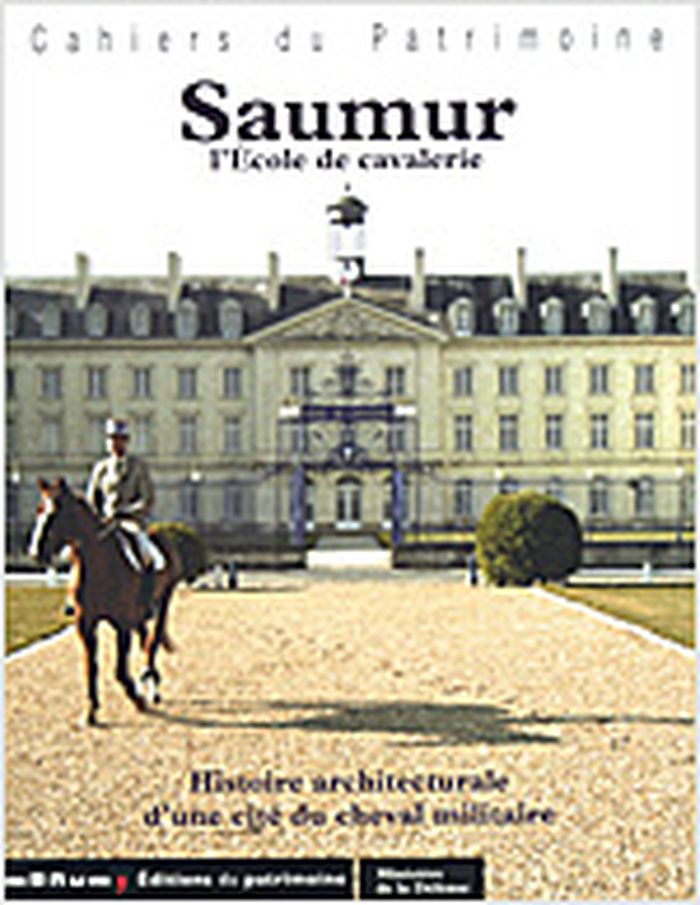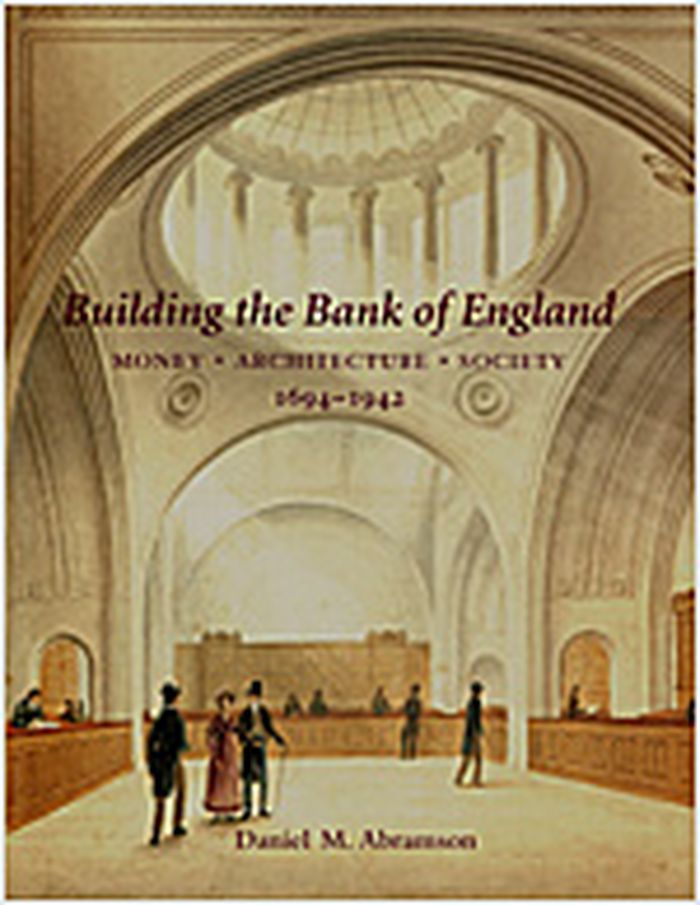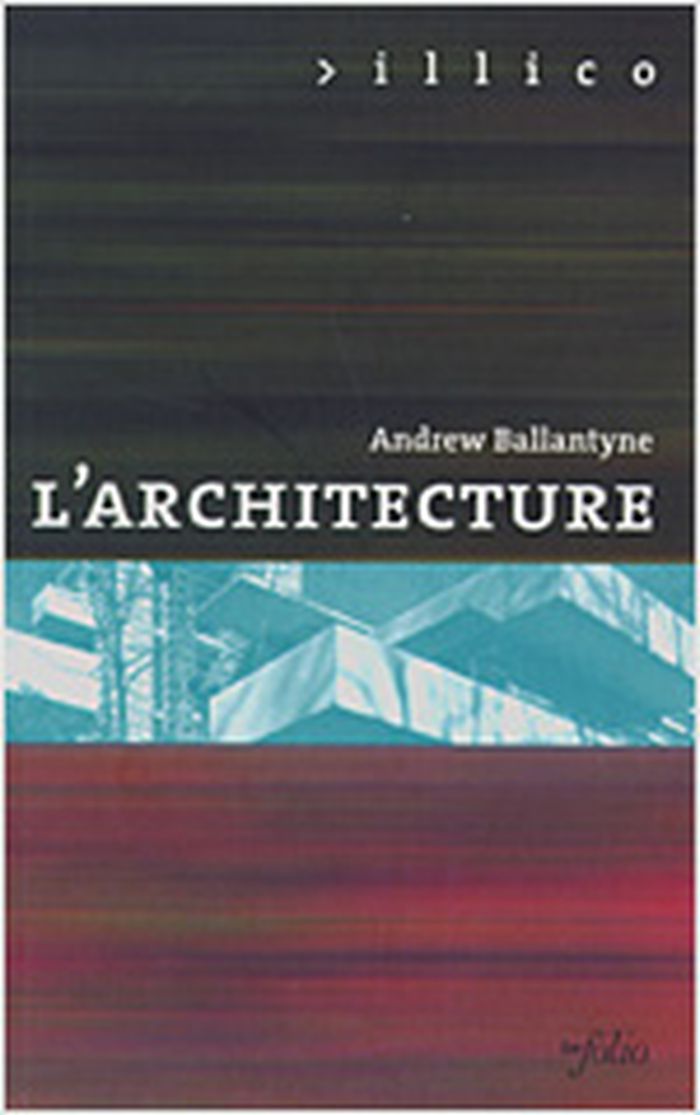$79.95
(disponible sur commande)
Résumé:
Les Grands Appartements constituent, avec la galerie des Glaces, l'espace d'apparat du château de Versailles. La réalisation des décors demanda dix années, entre 1671 et 1681. Dès son achèvement, le Grand Appartement de Louis XIV ne servait plus à loger le souverain, mais il était le cadre des cérémonies de la cour : soirs d' "Appartement", avec buffets, musique, jeu et(...)
Les Grands Appartements de Versailles sous Louis XIV
Actions:
Prix:
$79.95
(disponible sur commande)
Résumé:
Les Grands Appartements constituent, avec la galerie des Glaces, l'espace d'apparat du château de Versailles. La réalisation des décors demanda dix années, entre 1671 et 1681. Dès son achèvement, le Grand Appartement de Louis XIV ne servait plus à loger le souverain, mais il était le cadre des cérémonies de la cour : soirs d' "Appartement", avec buffets, musique, jeu et danse, trois fois par semaine, mais aussi parcours des grandes ambassades reçues par le roi. Les décors comprennent des lambris de marbres, des portes et dessus de porte en bois sculpté et doré, mais surtout des plafonds cintrés, ornés de stucs et de peintures réalisés par les meilleurs artistes de l'Académie royale (Charles de La Fosse, Jean Jouvenet, Jean-Baptiste de Champaigne, Noël Coypel...). Charles Le Brun, le Premier peintre de Louis XIV, assurait l'unité décorative en donnant aux artistes et aux artisans les dessins de la structure des plafonds, des éléments sculptés et même de certains sujets peints. Chaque salle était dédiée à l'une des sept " planètes " connues au XVIIe siècle, et à la divinité correspondante : Vénus, Diane (la Lune), Mars, Mercure, Apollon (le Soleil), Jupiter, Saturne. Cette iconographie, soigneusement élaborée par la Petite Académie (future Académie des inscriptions et belles-lettres), comprenait également un message politique, qui en constituait le " sens caché ". La complexité de l'iconographie répondait ainsi à la richesse des décors. Les Grands Appartements n'avaient pourtant bénéficié d'aucune étude monographique. L'objet de cet ouvrage est de combler cette lacune, en proposant pour la première fois une étude d'ensemble des décors, une couverture photographique complète ainsi que le catalogue raisonné des décors peints.
Histoire jusqu’à 1900
$99.95
(disponible sur commande)
Résumé:
Cette première étude de l'Ecole de cavalerie donne à comprendre l'élaboration d'une équitation militaire, retrace les grandes phases de construction, suit l'évolution diachronique des différents bâtiments et analyse l'interaction entre la ville et l'Ecole.
Saumur : l'École de cavalerie
Actions:
Prix:
$99.95
(disponible sur commande)
Résumé:
Cette première étude de l'Ecole de cavalerie donne à comprendre l'élaboration d'une équitation militaire, retrace les grandes phases de construction, suit l'évolution diachronique des différents bâtiments et analyse l'interaction entre la ville et l'Ecole.
Histoire jusqu’à 1900
$118.95
(disponible sur commande)
Résumé:
The Bank of England symbolizes the economic strength, influence, and potency of Britain. Founded in 1694, its world-famous buildings were built and rebuilt four times by different architects, most notably Sir John Soane. The Bank’s three-and-a-quarter-acre complex has included elegant public banking halls and private offices, courtyards and gardens, warehouses and vaults,(...)
Histoire jusqu’à 1900
janvier 1900, New Haven and London
Building the bank of England : money, architecture, society 1694-1942
Actions:
Prix:
$118.95
(disponible sur commande)
Résumé:
The Bank of England symbolizes the economic strength, influence, and potency of Britain. Founded in 1694, its world-famous buildings were built and rebuilt four times by different architects, most notably Sir John Soane. The Bank’s three-and-a-quarter-acre complex has included elegant public banking halls and private offices, courtyards and gardens, warehouses and vaults, residential apartments and guards’ barracks. This illustrated book examines for the first time the entire architectural history of the Bank from the seventeenth through the twentieth centuries. Drawing on a variety of perspectives, the book relates the history of the Bank of England to current debates on English economic, social, and urban history, including issues of national identity, mercantile politics, and the commercialization of culture. The book also shows how the building itself has expressed various historical tensions among the Bank’s inhabitants and publics: its directors and detractors, its clerks and clientele, its tourists, and even its mob attackers.
Histoire jusqu’à 1900
$80.00
(disponible sur commande)
Résumé:
There's an ethereal magic to standing beneath a dome, neck craned, looking up at a vision of the heavens created by some long-ago figure of genius. From the Pantheon to the Hagia Sophia, the power of the dome seems transcen-dent. Photographer David Stephenson's magnificently kaleidoscopic images of dome interiors capture this evanescent drama, and make Visions of Heaven(...)
Visions of heaven : the dome in European architecture
Actions:
Prix:
$80.00
(disponible sur commande)
Résumé:
There's an ethereal magic to standing beneath a dome, neck craned, looking up at a vision of the heavens created by some long-ago figure of genius. From the Pantheon to the Hagia Sophia, the power of the dome seems transcen-dent. Photographer David Stephenson's magnificently kaleidoscopic images of dome interiors capture this evanescent drama, and make Visions of Heaven one of the most spectacularly beautiful books we've ever produced. Traveling from Italy to Spain, Turkey, England, Germany, and Russia, among other countries, and photographing churches, palaces, mosques, and synagogues from the second to the early twentieth century, Stephenson's work amounts to a veritable typology of the cupola. His images present complex geometrical structures, rich stucco decorations, and elaborate paintings as they have never been seen before. Brilliantly calibrated exposures reveal details and colors that would otherwise remain hidden in these dimly lit spaces.
Histoire jusqu’à 1900
$54.95
(disponible sur commande)
Résumé:
Le XIXe siècle a vu se multiplier les monuments civiques et décoratifs sur les places publiques au point que l'on a pu parler de " statuomanie ". agrandissement des villes, création de nouvelles places, en même temps que développement de la conscience nationale et volonté de rendre hommage aux " grands hommes " de la patrie sont les ferments d'un tel phénomène,(...)
La statuaire publique au XIXe siècle
Actions:
Prix:
$54.95
(disponible sur commande)
Résumé:
Le XIXe siècle a vu se multiplier les monuments civiques et décoratifs sur les places publiques au point que l'on a pu parler de " statuomanie ". agrandissement des villes, création de nouvelles places, en même temps que développement de la conscience nationale et volonté de rendre hommage aux " grands hommes " de la patrie sont les ferments d'un tel phénomène, particulièrement intense dans la seconde moitié du siècle. Fortement symboliques, ces œuvres procèdent de l'esthétique naturaliste de la IIIe République et suscitent de vifs débats. La " mobilisation " des monuments et des statues pour la récupération des métaux non ferreux décrétée par le maréchal Pétain va en éliminer une très grande partie. Quel rôle ont joué ces statues en France au XIXe siècle ? quelle idéologie ont-elles exprimée ? comment ont-elles été perçues au XXe siècle ? quelle réponse leur apportent les artistes contemporains ? a travers l'analyse de guides de voyage, de manuels scolaires, de carte postales, dont la fameuse collection Debuisson qui compte 20 000 cartes représentant des monuments, ou encore l'analyse de cas précis, ces questions et bien autres ont été ont été traité par des historiens, historiens de l'art, par le centre louis et Charles Blanc de l'université de Paris - X-Nanterre, en collaboration avec l'inventaire général et avec la participation du musée d'Orsay et de l'INHA. Cet ouvrage, qui en reprend les communications, constitue, par un état des lieux le plus complet possible, un outil unique pour tous ceux qui s'intéressent à la question.
Histoire jusqu’à 1900
$69.95
(disponible sur commande)
Résumé:
Est-il architecture sacrée plus actuelle que celle de ces monastères élevés au XIIe siècle par des hommes qui fuyaient le tumulte des villes pour trouver en forêt la solitude, le silence, l'eau, la pierre, la lumière ? Engendré par l'espace naturel et surnaturel, "l'environnement" géographique et mystique du Désert, déterminé par un "cadre de vie", la règle de saint(...)
L'ordre cistercien : d'après les trois soeurs provençales, Sénanque, Silvacane, Le Thoronet
Actions:
Prix:
$69.95
(disponible sur commande)
Résumé:
Est-il architecture sacrée plus actuelle que celle de ces monastères élevés au XIIe siècle par des hommes qui fuyaient le tumulte des villes pour trouver en forêt la solitude, le silence, l'eau, la pierre, la lumière ? Engendré par l'espace naturel et surnaturel, "l'environnement" géographique et mystique du Désert, déterminé par un "cadre de vie", la règle de saint Benoît, le monastère cistercien est exemplaire de ce qu'on appelle aujourd'hui une architecture fonctionnelle. Instrument agricole et instrument liturgique, instrument de prière, l'architecture cistercienne articule, structure, dans un ordre rigoureux, autour du cloître, ses différents bâtiments en fonction de leur utilisation d'heure en heure canoniale, au rythme solaire de l'office divin. C'est ce mouvement de l'ombre et de la lumière, informant l'architecture du lever au coucher du soleil et de l'hiver à l'été, que les photographies de ce livre ont saisi, en relevant pas à pas les lieux réguliers parcourus par le moine du XIIe siècle dans sa vie quotidienne, de Matines à Complies. Mis en regard des photographies, des textes du XIIe siècle permettent de suivre en même temps le mouvement intérieur de la méditation et de la contemplation cisterciennes d'une Lumière dont Bernard de Clairvaux disait qu'elle s'incarnait dans l'Ombre et dans la Pierre... De toutes les architectures de Cîteaux, aucune n'était plus favorable à cette démonstration que celle des "trois sœurs provençales", Sénanque, Silvacane et Le Thoronet.
Histoire jusqu’à 1900
$57.95
(disponible sur commande)
Résumé:
Much has been said about the Arts & crafts spirit of Californians, their appreciation of the land, their desire to build "simple" yet interesting houses that connect with the outdoors (sleeping porches, gardens, verandas, terraces, and so on), and their love of wilderness areas. This new edition of the classic, "Building with nature: roots of the San Francisco Bay region(...)
Building with nature : inspiration for the arts & crafts home
Actions:
Prix:
$57.95
(disponible sur commande)
Résumé:
Much has been said about the Arts & crafts spirit of Californians, their appreciation of the land, their desire to build "simple" yet interesting houses that connect with the outdoors (sleeping porches, gardens, verandas, terraces, and so on), and their love of wilderness areas. This new edition of the classic, "Building with nature: roots of the San Francisco Bay region tradition", focuses on the beginnings (1865 and on) of the Bay area shingle style and Arts & crafts collaboration in California, and the origins of the trend toward building simple rustic homes in harmony with nature. Freudenheim explores how and why a small, influential group of Californians (including Joseph Worcester, Bernard Maybeck, Charles Keeler, William Keith, Charles Lummis, A. Page Brown, and others)-all of whom had come from the East or from England-were especially devoted to Ruskin and the Arts & crafts style and how this combined with their dedication to California's natural beauty to create a unique architectural movement.
Histoire jusqu’à 1900
livres
$89.95
(disponible sur commande)
Résumé:
Cet ouvrage retrace l'évolution urbaine de Rennes, à travers le lotissement, l'une des principales formes d'extension de la ville, les monuments, investis d'un rôle d'embellissement du centre, et l'équipement, qui vient consolider un quartier périphérique.
Rennes : mémoire et continuité d'une ville
Actions:
Prix:
$89.95
(disponible sur commande)
Résumé:
Cet ouvrage retrace l'évolution urbaine de Rennes, à travers le lotissement, l'une des principales formes d'extension de la ville, les monuments, investis d'un rôle d'embellissement du centre, et l'équipement, qui vient consolider un quartier périphérique.
livres
novembre 2004, Paris
Histoire jusqu’à 1900
livres
The British stable
$93.95
(disponible sur commande)
Résumé:
A magnificently illustrated volume exploring the history, variety, and importance of stables in the British Isles Until the early years of the twentieth century, horses played an essential role in the agriculture, transport, industry, warfare, and sport of Britain. Their stables were practical shelters, but they were also more than that -- in many cases a handsomely(...)
The British stable
Actions:
Prix:
$93.95
(disponible sur commande)
Résumé:
A magnificently illustrated volume exploring the history, variety, and importance of stables in the British Isles Until the early years of the twentieth century, horses played an essential role in the agriculture, transport, industry, warfare, and sport of Britain. Their stables were practical shelters, but they were also more than that -- in many cases a handsomely appointed stable served as much for the elegant display of horses as for their shelter. This beautiful book, illustrated with over one hundred specially commissioned photographs, focuses attention for the first time on the history, the variety, and the importance of stables in the British Isles. Leading architectural historian Giles Worsley examines stables from the twelfth century through 1914, with special attention to country house stables -- including those at Chatsworth and Kedleston -- where the finest examples of stable design are found. Worsley discusses the factors that influenced the architecture of stables, whether owned by noblemen, great brewing companies, or the British army. Fascinating and lucidly written, “The British Stable” will appeal equally to those with an interest in horses, country houses, architectural history, or the special relationship between horses and the people of Britain.
livres
octobre 2004, New Haven
Histoire jusqu’à 1900
L'architecture
$19.95
(disponible sur commande)
Résumé:
Ce livre examine habilement l'équilibre entre la notion de postérité et l'aspect pratique en architecture au cours de l'histoire. Des pyramide de l'Égypte ancienne à l'Opéra de Sydney jusqu'au cottage traditionnel, l'architecture offre des contrastes frappants et une dimension culturelle non-négligeable. Au-delà de la présentation des périodes et des styles distincts(...)
L'architecture
Actions:
Prix:
$19.95
(disponible sur commande)
Résumé:
Ce livre examine habilement l'équilibre entre la notion de postérité et l'aspect pratique en architecture au cours de l'histoire. Des pyramide de l'Égypte ancienne à l'Opéra de Sydney jusqu'au cottage traditionnel, l'architecture offre des contrastes frappants et une dimension culturelle non-négligeable. Au-delà de la présentation des périodes et des styles distincts tels que «baroque» ou «moderne», Andrew Ballantyne explore la signification économique, politique et esthétique des objets architecturaux tout en relevant comment l'architecture prend tout son sens à la lumière de la tradition et comment elle contribue à faire de nous les êtres que nous sommes.
Histoire jusqu’à 1900







